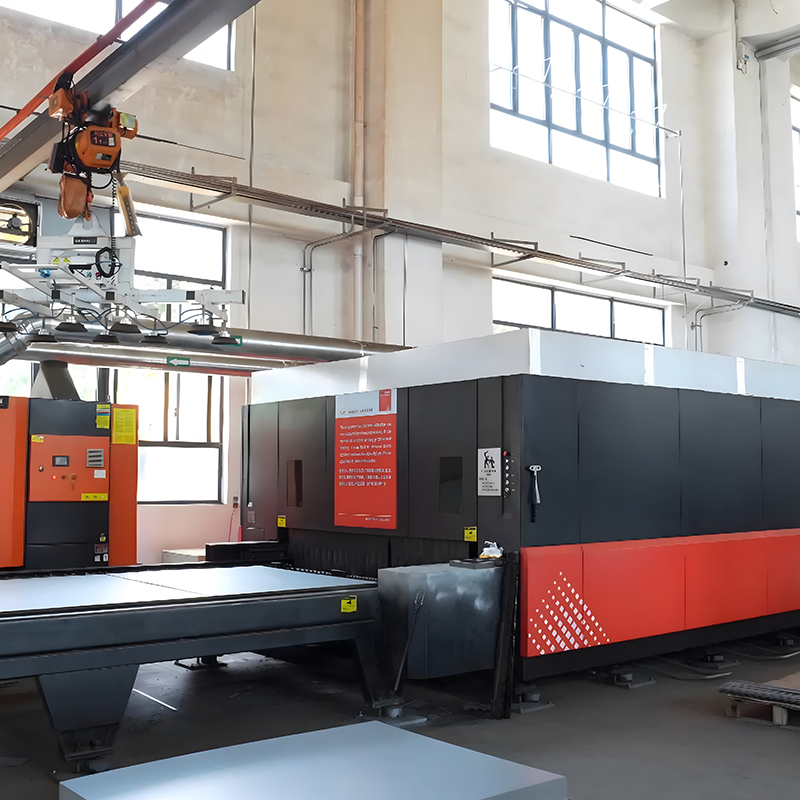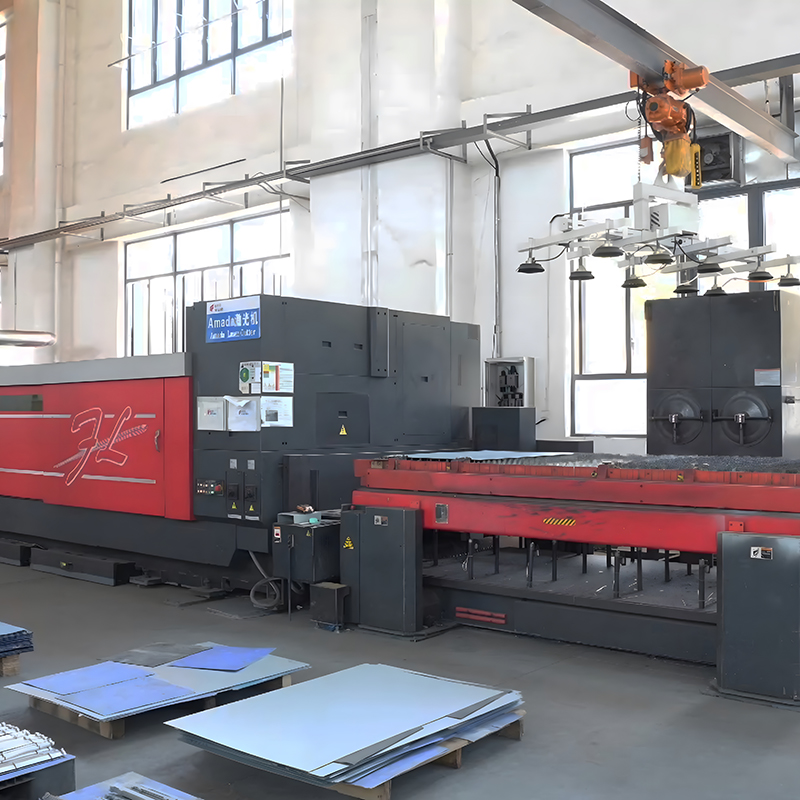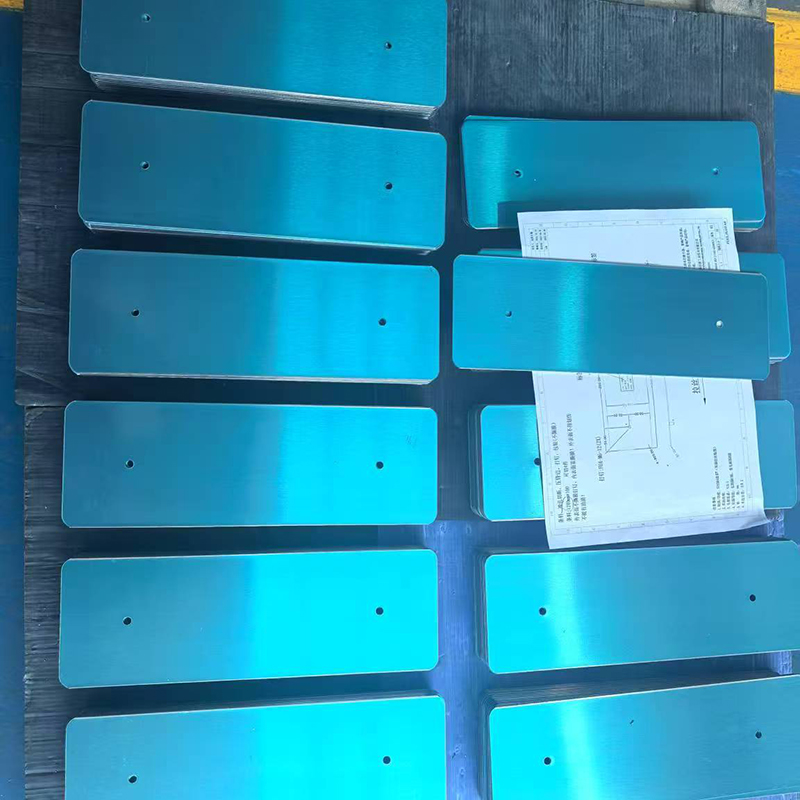Imagine an incredibly powerful, super-focused beam of light. That's the "laser" in laser cutting. We use this beam to slice through sheet metal with amazing accuracy. It melts or vaporizes the metal in a tiny, controlled spot, and then a jet of gas blows the molten stuff away. The result? A clean, precise cut, exactly where you need it. This isn't your grandpa's metal shop; it's high-tech sheet metal fabrication that lets us create complex shapes that would be a nightmare with older methods.

We know you have options, but here’s why our customers keep coming back for their laser cutting needs, especially when it comes to critical sheet metal components:
Edges So Clean, You Might Skip Finishing: Seriously. Because our laser beam is so fine (small laser spot, high energy density!), the cuts are incredibly narrow. The edges? They come out smooth, parallel, and perfectly perpendicular to the sheet metal surface. We're talking a surface roughness that's only tens of microns. For you, this often means less time and money spent on deburring or other finishing steps.
Speed That Saves You Money (and Headaches): We’ve invested in some serious horsepower – an 18KW and a 25KW laser cutting machine. What does that mean for your sheet metal project? It means we can cut fast, like, up to 150 meters per minute! Plus, we don't just slap your design on a sheet. Our software is smart. It figures out the absolute best way to arrange your parts on the sheet metal (a process called automatic or nesting) to get the most out of every single piece. Less waste = better costs for you.
Precision You Can Build On: When we say precise, we mean it. Our laser cutting can hit dimensional tolerances of ±0.05mm. Let that sink in – that's incredibly tight! Even the position of holes can be accurate to 0.05mm, and the straightness of a cut can also achieve a 0.05mm error margin. This isn't just a fancy number; it means your sheet metal parts will fit together exactly as designed, the first time.
No Touch, No Wear, Just Consistent Quality: One of the beauties of laser cutting is that only light touches your sheet metal. There are no traditional cutting tools to wear down. So, whether it's the first part off the machine or the thousandth, the quality is identical. This also means less stress on the material, which is great news for delicate sheet metal designs.
If You Can Design It, We Can Probably Cut It: Got intricate patterns? Sharp corners? Tiny features in your sheet metal? Laser cutting handles these with ease. And we’re not limited to just one type of material either.

The best laser cutting outcome starts with the right sheet metal. We wouldn't have it any other way at Foxsen. We know that different projects have different needs, so we work with a solid range of quality materials:
Cold-Rolled Steel (SPCC): This is a go-to for parts that will be electroplated or painted. It's easy to form and we typically use it for sheet metal up to 3.2mm thick.
Hot-Rolled Steel (SHCC): Best for flat parts, especially if they're getting plated or painted. We use this for sheet metal that's 3.0mm or thicker.
Galvanized Steel (SECC, SGCC): Need corrosion resistance? This is your pick. The SECC P-grade, for instance, is excellent for parts that need painting.
Copper (CU): If your sheet metal part needs to conduct electricity, copper is key. We can leave it as is, or have it nickel or chrome plated. It's a premium choice.
Aluminum (like 6061, 6063): Lightweight and naturally resistant to rust. We can apply surface treatments like chromate (J11-A) or various types of oxidation for enhanced properties.
Stainless Steel: For when you need strength, durability, and that classic look without any extra surface treatment. It’s a top-tier sheet metal option.
Not sure which sheet metal is best? That’s what we’re here for. We’ll help you choose based on what your part needs to do and your budget.
To make sure we’re giving you the absolute best results for your sheet metal, we employ some advanced laser cutting strategies:
Serious Power for Serious Thickness (High-Power Cutting): Those 18KW and 25KW lasers aren't just for show. They let us confidently tackle thicker sheet metal. For instance, we're achieving excellent results cutting carbon steel plates 25mm thick and even more, all while keeping the cut quality top-notch.
Cutting with Air to Cut Your Costs (High-Pressure Air Cutting): This is a clever one. For certain sheet metal types, we can use high-pressure, filtered air instead of pricier gases like nitrogen or oxygen. This can slash your gas costs and often speed up the laser cutting process significantly. Better for your wallet, faster for your project.
That Mirror Finish (Bright Surface Cutting): Want your carbon sheet metal parts to have that super smooth, almost reflective edge? Our bright surface cutting technique, using oxygen on medium-thickness carbon steel, delivers just that. It often means the part looks fantastic right off the machine.
One Cut, Two Parts (Common-Edge Cutting): Our software is smart enough to identify when two parts can share a cut line. This common-edge laser cutting means fewer cuts, fewer pierces, less wasted sheet metal, and faster production. It’s all about efficiency.

It's natural to have questions. Here are some things folks often ask us about our laser cutting for sheet metal:
Q1: You mentioned a few types of sheet metal, but can you list them out again?
A: You bet! We regularly work with Cold-Rolled Steel (SPCC), Hot-Rolled Steel (SHCC), Galvanized Steel (SECC, SGCC), Copper (CU), various Aluminum grades like 6061 and 6063, and, of course, Stainless Steel. If you have a specific sheet metal in mind not listed, just ask!
Q2: How thick can the sheet metal be for your laser cutting?
A: Good question! Our machines are pretty versatile. For many common sheet metal projects, we're often cutting material around 6mm thick, and can comfortably go up to 14mm for general purposes. But with our 18KW and 25KW lasers, we can handle much thicker carbon steel – we're talking 25mm and above with great results.
Q3: Just how accurate is this "±0.05mm precision" you mentioned?
A: It’s very accurate! When we say ±0.05mm for your sheet metal parts, that means the final dimensions of your part will be within that tiny range of the target. This applies to the overall size, the diameter of any holes we cut (where we can achieve 0.05mm precision), and the placement of features (positional accuracy also within 0.05mm). It means things fit like they're supposed to.
Q4: How does laser cutting actually save me money on sheet metal parts?
A: It comes down to a few things. First, our laser cutting is fast (up to 150m/min!), which means less machine time per part. Second, you don't need to pay for expensive custom tools or dies like you would with stamping, especially if you're doing prototypes or smaller production runs. Third, our smart software uses as much of the sheet metal as possible, so you're not paying for a lot of wasted material. It all adds up!
Q5: What if I need really, really clean edges on my sheet metal parts?
A: We can definitely help with that. If you're working with medium-thickness carbon sheet metal and need a super smooth, almost polished edge, our bright surface laser cutting technique is the way to go. It gives a fantastic, burr-free finish.
Look, at Foxsen, we're serious about laser cutting and sheet metal. We’ve got the gear (like our 18KW and 25KW machines), the know-how, and a real desire to make your parts perfectly. We aim for efficient, cost-effective, and even green (low pollution!) manufacturing.
Ready to see how our laser cutting can make a difference for your sheet metal components? Give us a shout. Let's talk about your project!

Rich experience:Over 16+ years experience in sheet metal fabration products

FOXSEN Strong QC team to ensure 100% inspection before shipment.

Our services include design, prototyping, tooling, and finishing, providing a one-stop solution for your sheet metal fabration parts needs.

Professional sheet metal production management MES ensure on-time delivery of products.

We have professinal experienced team of technicians and excellent processing equipment

Automation equipment and Softing tooling reduce production costs improve product cost-effectiveness